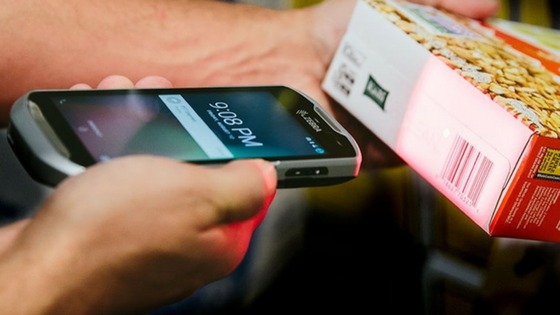STREAM has been partnered with Zebra to resell enterprise-level ruggedised touch mobile computer devices since September last year.
We recommend Zebra’s TC56 or TC55 Devices for drivers collecting ePODs with the STREAM Mobile Driver App, or managing vehicle maintenance with the driver daily walkaround check app. We can also supply other specialised rugged devices for people working all parts of the transport and logistics industry from warehouse operatives to sales representatives.
It can be difficult though, to know how to begin understanding and deciding which mobile devices your team needs.
That’s why we’re sharing this whitepaper from Zebra that will help businesses to develop an overall mobile device strategy.
Why develop a strategy for your mobile devices?
Developing a mobile device strategy may at first sound like a complicated decision. Surely you can just go out, buy a couple of smartphones and hand them out to the team?
Actually, developing the right mobile device strategy for your team and your business can be a business-critical process and a significant investment.
An investment, not just in terms of the upfront cost of devices, but also the potential costs down the road that may result from choosing the wrong device.
Hefty upfront costs may have you considering, at first glance, consumer-grade devices. However, take into account the cost of repairs and replacements down the line and opting for more robust devices on a payment plan may be a cheaper overall choice.
Not to mention the potential for downtime caused by easily smashed and chipped consumer devices, which are usually built for just 18 month lifespan.
How to develop a mobile device strategy
So, how can you go about developing a device strategy and select the right mobile devices for your business?
First of all, it is essential to really drill down and understand your business needs. What goals are you trying to achieve as pat of your mobile device strategy?
This knowledge should inform the types of devices you choose, as well as the type of warranty you cover them with.
Equally, getting this wrong could result in a major investment in the wrong devices, bringing down your efficiency and offering a low ROI, thanks to high repair costs and extended periods of downtime.
Another risk of getting your mobile device strategy wrong is that a security risk could be posed to the data your company deals with on a daily basis. Data and information need to be transferred securely, and consumer smartphones on an entry-level contract have the potential to undermine that security.
Developing a mobile device strategy
As a business dealing with mobile-centric processes, there are three key options to equip your team with the devices they need:
- Enterprise devices: Zebra’s specialised rugged devices, which feature business-critical functionality such as in-built high quality scanners
- Consumer services: consumer-grade smartphones available on the high street, like a Samsung Galaxy S7 or Google Pixel
- Bring Your Own Device (BYOD): asking your workforce to use their own devices may seem cost effective, but can be fraught with issues – from compatibility problems (do all your business-critical applications work on Android, iOS and Windows?) and the question of legal responsibility for phones that break on-the-job, to the potentially less-than-reliable data plans or battery life of devices chosen and paid for by your workforce.
By developing a mobile device strategy before investing, you can avoid some simple (but costly) mistakes, improve ROI and maximise mobile productivity.








